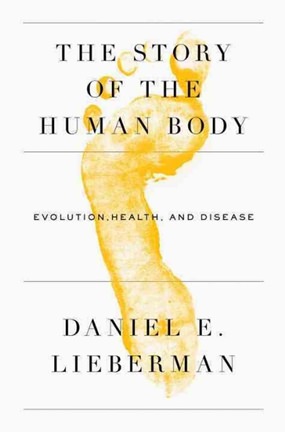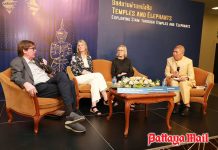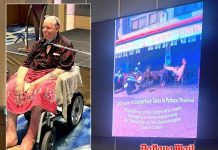The Story of the Human Body (ISBN 978-0-307-74180-6, Vintage Books, July 2014) and written by Daniel E. Lieberman, a Harvard Professor, has a subtitle Evolution, Health, and Disease. With the world becoming more health conscious, I felt it was a good book to pick from the Bookazine shelf at The Avenue, Second Road.
Lieberman introduces the reader to the concept of the Last Common Ancestor, shared between us and the apes. Unfortunately there are no fossils for us to be able to pinpoint our ancestor, with the oldest known forebear being a female from Africa called Lucy, but one who had already split from the apes.

Lieberman introduces the reader to many scientific complexities in a very warm manner. Discussing bipedalism and how slowly it takes the human child to walk, he writes, “I fondly remember my daughter when she took her first triumphant steps, which suddenly made her seem so much more human than our dog.”
It is fascinating that from skeletal remains of our ancestors, we have been able to deduce that not only did they walk on two legs, but they were also able to climb trees, much in the fashion of monkeys.
Lieberman splits his book into three parts, the first being Apes and Humans, Part 2 Farming and the Industrial Revolution and Part 3, The Present, The Future.
Lieberman debunks the theories that evolution ceased after human beings, as we know them, settled down with the Industrial Revolution. The current environment in which we grow affects evolution, which in turn is passed on to one’s children. “Although human genes have changed modestly over the last few thousand years, cultural changes have dramatically transformed our environments, often resulting in a very different, arguably more important kind of evolutionary change than natural selection,” writes Lieberman.
He refers to ‘evolutionary medicine’ where he looks at the likelihood of the next epidemic. “Overusing antibiotics not only promotes the evolution of novel superbugs but also alters the body’s ecology in ways that may contribute to new autoimmune diseases such as Crohn’s Disease.” (In countries such as Thailand where antibiotics can be purchased over the counter, this is already a real problem.)
His explanations on ‘mismatch’ diseases are interesting, where we pass on behaviors and environments that promote these medical conditions which includes hypertension from diets that produce obesity, cavities, Type 2 Diabetes, heart disease, some forms of cancer, malocclusions, myopia and flat feet. His forays into the future do not spell good things for homo sapiens.
This is an excellent resource book with 60 pages of notes and references, and at B. 605 represents a literary bargain. No sensationalism, no half-baked theories, but the reader is given scientific facts in a most understandable and enjoyable way. If you have ever stopped to think back in time, or wondered ‘why’ we do certain behaviors or succumb to various diseases, then this is a book that should be in your library. Put aside a few days, as this book has so much wealth of detail you will be best served by reading single chapters at a time.




